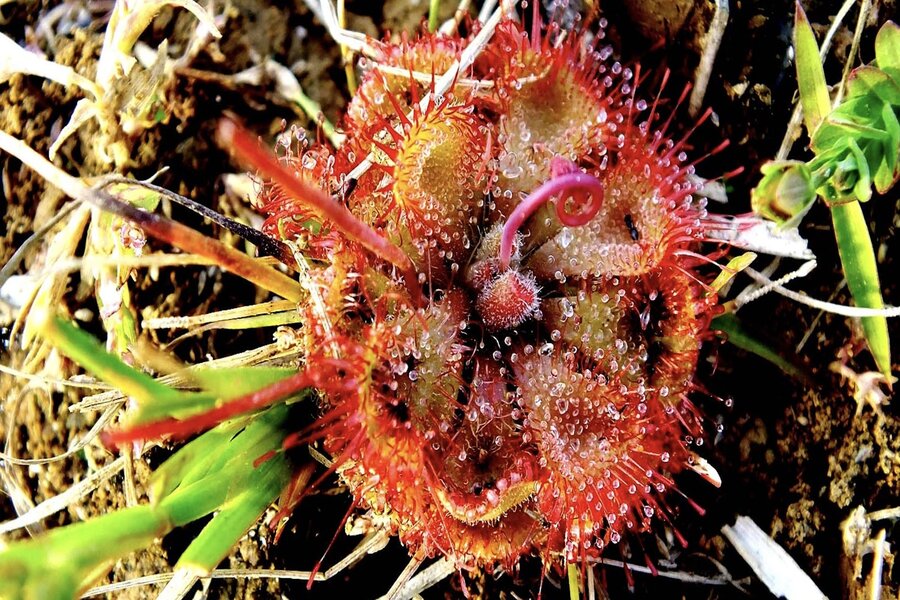I recently read a paper from 2007 by two plant geneticists, Wolf-Ekkehard Lönnig and Heinz-Albert Becker, from the Max-Planck-Institute for Plant Breeding Research in Cologne, Germany. [1] The paper forms part of a scholarly monograph, Handbook of Plant Science (Volume 2), published by Wiley. The paper presents a review of carnivorous plants, which, by employing “enormously different and ingenious trap mechanisms,” ensnare and digest insects. Around 500 species of plant are carnivorous, though it was hundreds of years before the general recognition of carnivory in plants.
The authors begin by giving a brief summary of the history of research on carnivorous plants, and the habitats of carnivorous plant species. The paper then considers their “functional morphology and the anatomy of different trap types,” as well as the digestion of their prey. The authors discuss a single example of each of the various types of trap, including the adhesive type, slipperiness, Dionaea types (the so-called Venus flytraps), aquatic traps, and suction traps. Let us describe each of these in turn.
Adhesive-Type Traps
Carnivorous plants such as sundews (Drosera, see the image at the top) and butterworts (Pinguicula) have specialized structures such as glandular hairs or tentacles that secrete a sticky substance, typically a thick, glue-like substance called mucilage. When an insect comes into contact with the sticky substance on the plant’s surface, it becomes trapped and is unable to escape. Once the insect is trapped, the plant secretes digestive enzymes onto the prey to break it down. These enzymes help to dissolve the prey’s soft tissues, allowing the plant to absorb the released nutrients.
Slipperiness
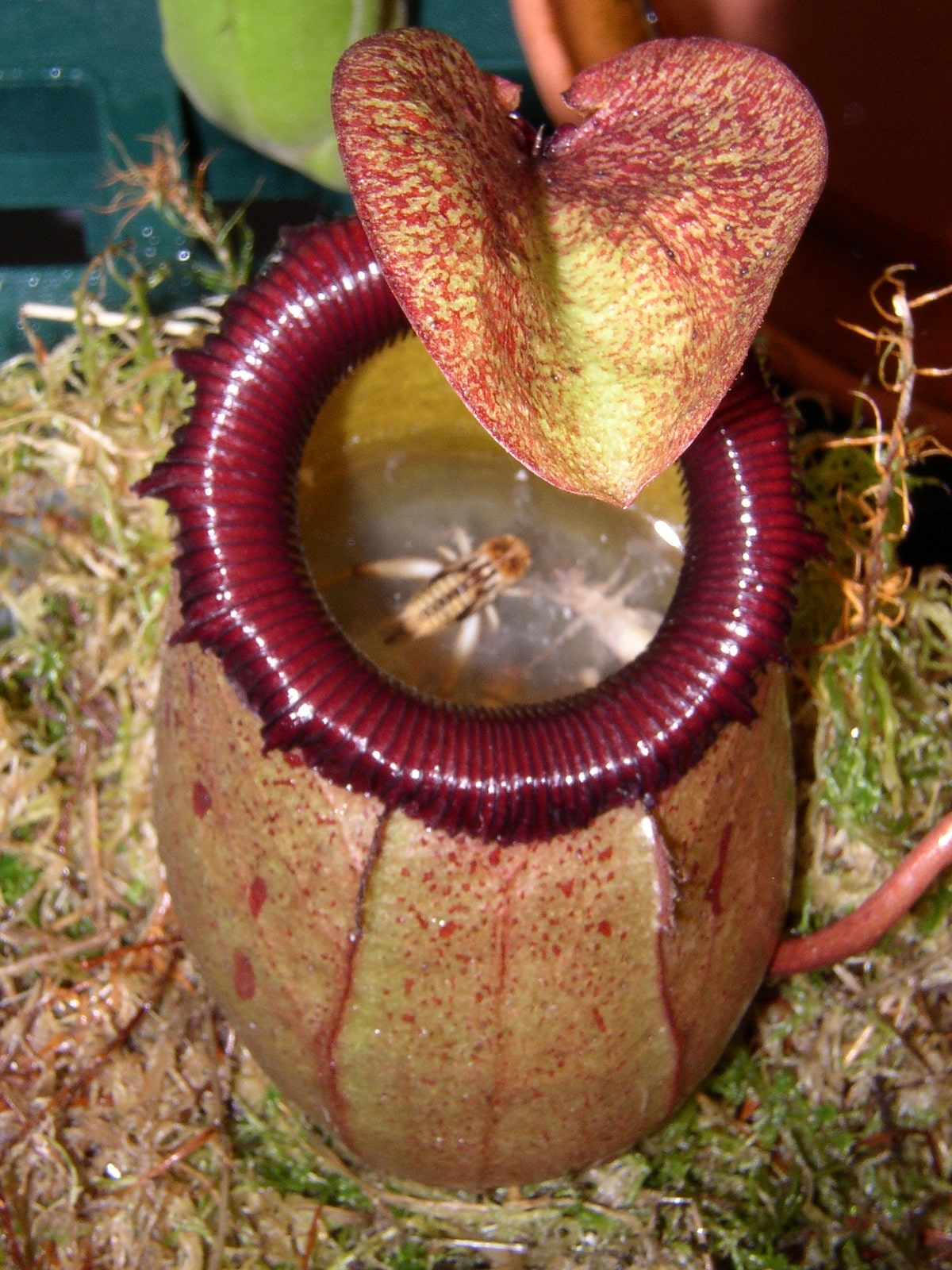
The slipperiness style of trap, exemplified by species such as Nepenthes (tropical pitcher plants), involves a mechanism that relies on a combination of specialized structures and fluids to capture and digest prey. Nepenthes plants develop specialized pitcher-shaped structures that act as traps. These are often modified leaves with a tubular shape (see the image above) and a slippery inner surface that is coated with a waxy substance. This coating makes the surface extremely slippery, causing insects to lose their footing and fall into the pitcher, at the bottom of which is a pool of fluid (often a mixture of rainwater and digestive enzymes), which serves to drown the prey and initiate digestion.
The Venus Flytrap
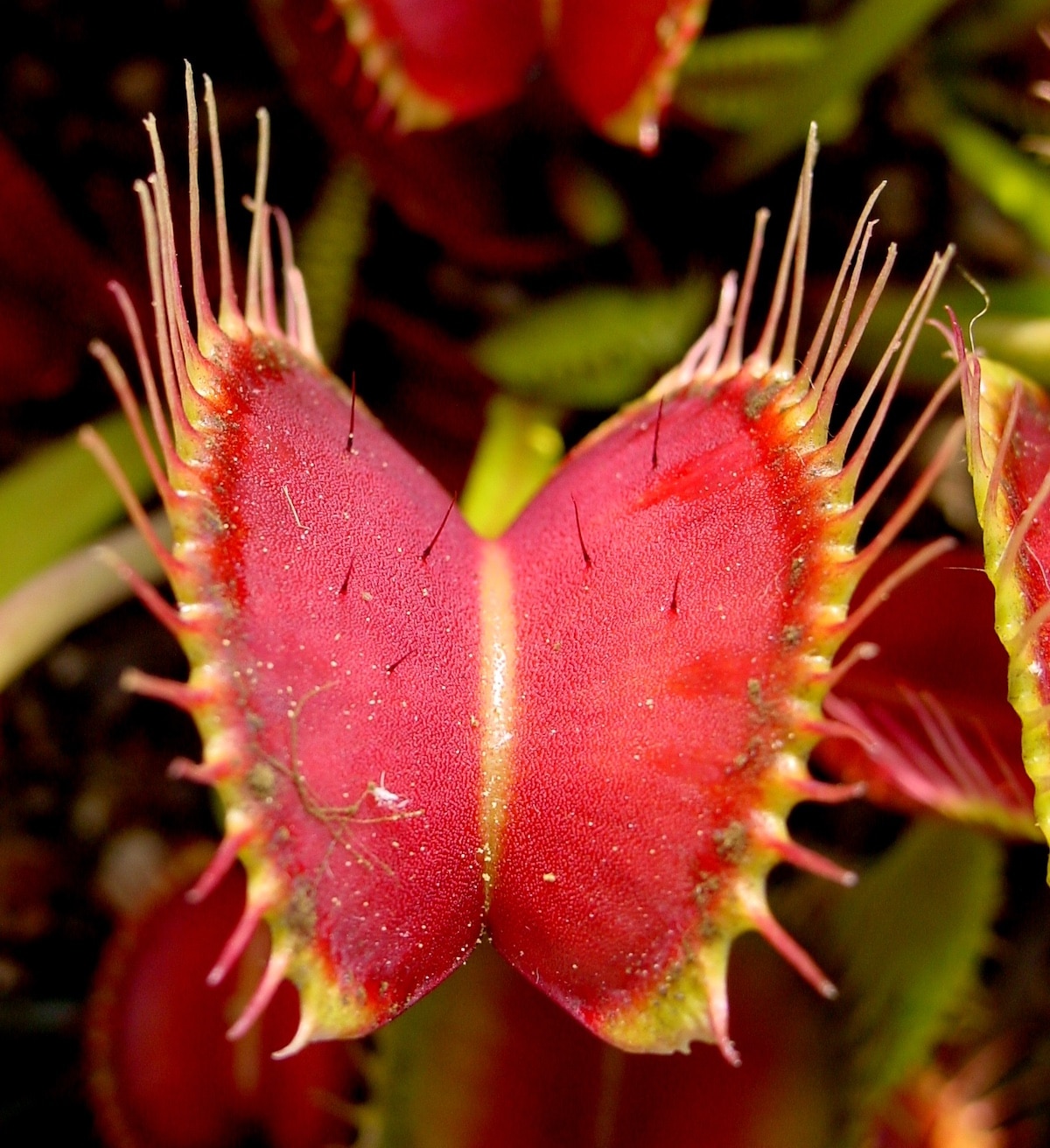
Dionaea muscipula, commonly known as the Venus flytrap, utilizes modified leaves that form a trapping structure. Each leaf consists of two lobes with sensitive trigger hairs on their inner surfaces. When an insect touches the trigger hairs, it stimulates the plant to close its trap. This mechanism is activated when the trigger hairs are touched twice within a short period, signaling the presence of potential prey. Upon triggering, the lobes of the trap close rapidly, typically within a fraction of a second. Once closed, the edges of the lobes interlock, forming a sealed chamber around the prey and preventing its escape. The plant then secretes digestive enzymes within the closed chamber.
The Corkscrew Plant
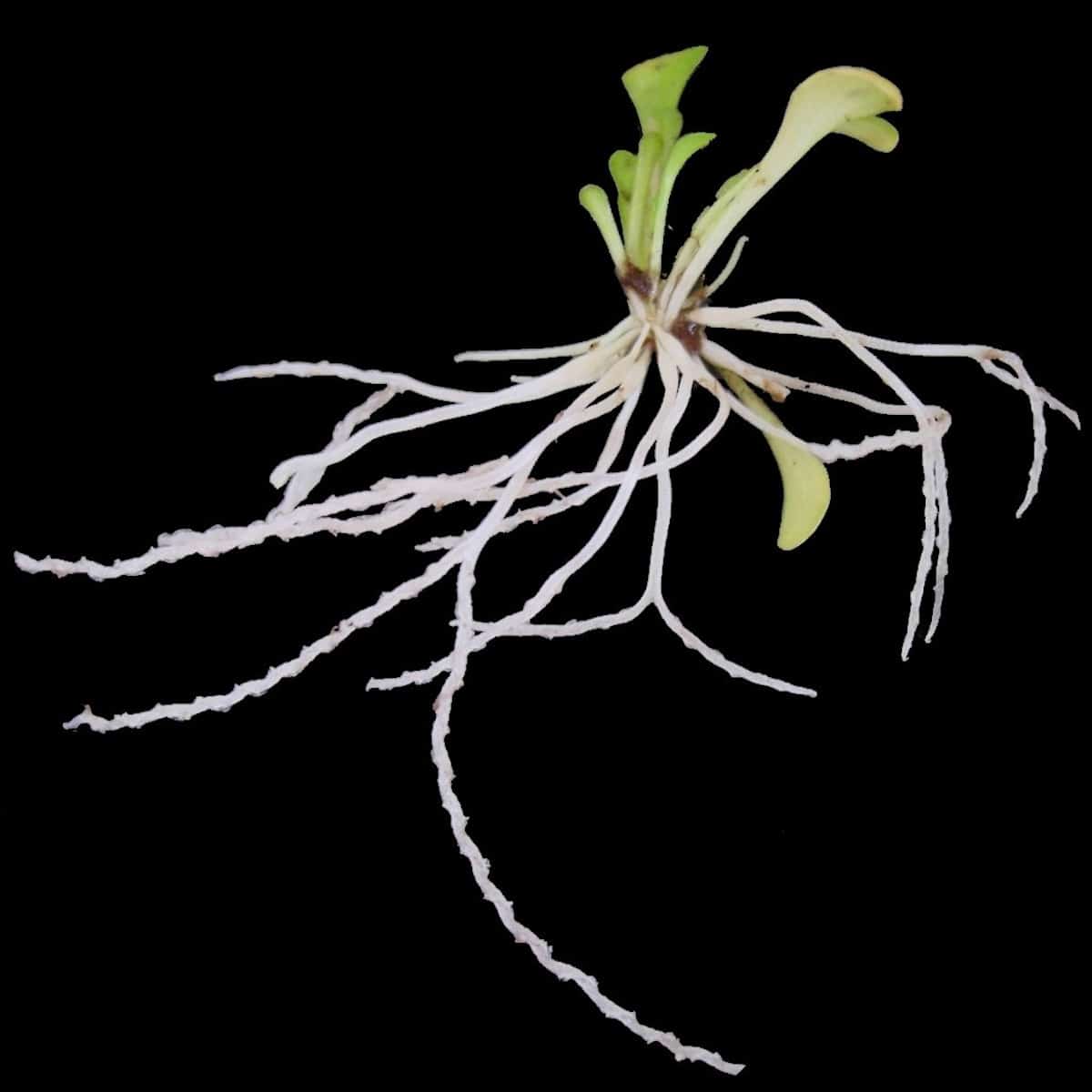
Genlisea, commonly known as the corkscrew plant, utilizes a trapping mechanism located underground within subterranean leaves, which form slender, corkscrew-shaped tubes that penetrate the soil. These tubes are lined with inward-pointing hairs or trichomes that facilitate prey capture. Genlisea attracts small aquatic organisms such as protozoans, small crustaceans, and larvae through the release of secretions or the production of chemical cues. As small organisms move through the soil or aquatic substrate, they come into contact with the inward-pointing trichomes lining the corkscrew-shaped tubes. These trichomes act as one-way gates, allowing prey to enter but preventing their escape. Once captured, the prey becomes trapped within the corkscrew-shaped tubes. Genlisea secretes digestive enzymes into these tubes, which break down the soft tissues of the prey.
Suction Traps
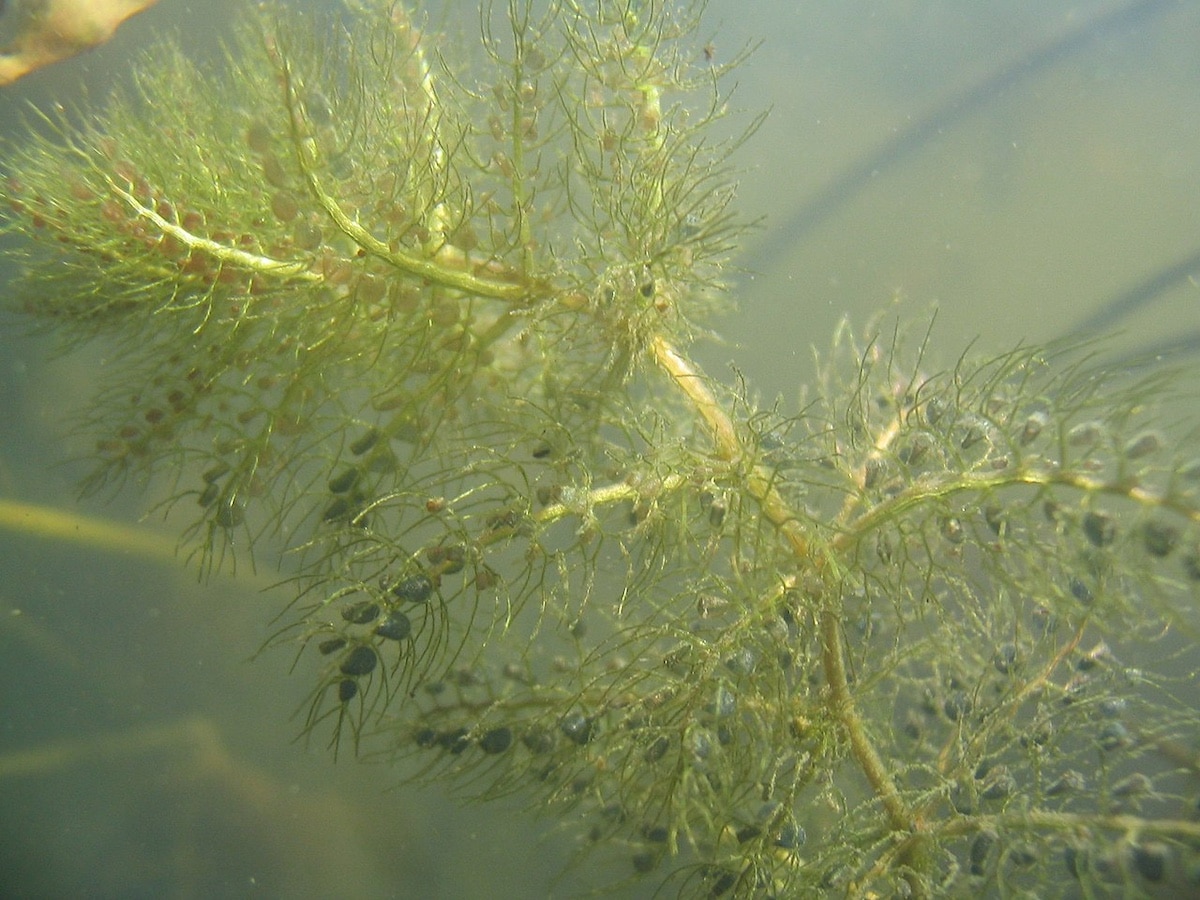
The plant genus Utricularia (commonly known as bladderworts) utilizes a suction trap. These plants are typically aquatic or live in damp terrestrial environments. Their trap consists of a hollow, swollen bladder-like structure that is attached to the plant’s underground stems (rhizoids). The opening of the bladder is surrounded by trigger hairs. When touched by prey, the hairs initiate the trap’s mechanism. Inside the bladder, there is a partial vacuum created by active ion transport. This causes the bladder to be under negative pressure compared to the external environment. At the opening of the bladder is a specialized door or valve mechanism. This valve is kept tightly closed by the partial vacuum inside the bladder. When prey touch the trigger hairs, that causes the door to open suddenly, resulting in a suction force drawing water, along with the prey, into the bladder where it can be digested by the plant’s enzymes.
Involved in digestion of captured prey in the traps described above are various enzymes, including acid phosphatase, proteases, peptidases, esterases, and chitinase, as well as fibonuclease and deoxyribonuclease. Aldrovanda also possesses an amylase.
The Problem of Convergence
The authors also present a discussion concerning the evolutionary origins of carnivorous plants. They observe an impressive level of convergence — that is, complex features that have apparently arisen independently multiple times in the history of life. They note,
“Although the carnivorous nature of Roridula sp., Paepalanthus bromelioides and Brocchinia reducta is still doubted by some authors, most writers agree that the nine fully substantiated families belong to six different plant orders already clearly show that carnivory in plants must have arisen several times independently of each other. In a scenario of strong convergence based on morphological data the pitchers might have arisen seven times separately, adhesive traps at least four times, snap traps two times and suction traps possibly also two times.”
The authors further note that convergence of complex traits has been thought by many to be so intrinsically unlikely that the conclusion that they arose multiple times independently has been strongly resisted. However, “molecular comparisons have corroborated the independent origin of at least five of the carnivorous plant groups.”
Irreducible Complexity
The authors further quote earlier work that has questioned the ability of unguided evolutionary processes to account for the origins of carnivory in plants. They note,
“After a careful description of the structures and functions of the trap, Nachtwey raised the question of how the origin from a leaf tip should be envisioned and went on to task (pp. 99/100): ‘Which nondirectional mutation should have occurred first in a normal leaf tip and subsequently displayed any selective advantage? Without an advantage it would have been lost as trivial. The modern synthesis strongly emphasizes that mutation and section have to cooperate to generate new structures. So, by which blind mutations should the suction trap have originated?’ And regarding the problem of further evolutionary stages the writer continues: ‘Even a perfect suction trap displaying the astonishing ability to rapidly catch animals would have no advantage in the struggle for life because the prey would not be digested. Conversely, the production of highly effective digestive juices would be of no avail for the tip of a leaf as long as it could not capture the prey, which is absolutely necessary. But even if suction trap and digestive juices cooperated, nothing would be gained in the struggle for life. The dissolved proteins must also be absorbed and metabolized to species-specific proteins. The formation of the suction trap requires the perfect cooperation of many different genes and developmental factors. At the end a benefit is reached in the struggle for life, but not by any evolutionary stage.’ Nachtwey concluded that none of the contemporary evolutionary theories was able to answer these questions, proposing that the answer might lie outside the present scientific paradigms.”
The authors also observe that,
“Juniper et al., who favor the functional proposition of Schnell quoted above, also agree with Nachtwey on the intricacy of the evolutionary problem, stating that ‘no adequate evolutionary sequence can yet be constructed even to present a speculative path for the origin of what appears to be a relatively homogenous group’ (1989, p. 43). As for this problem, they continue that Ultricularia ‘is a complex bit of mechanism and offers, as yet, an intractable problem in evolution’ (1989, p. 117).”
Furthermore:
“Yet, even authors preferring ‘gradual evolutionary change through unimaginable aeons of time’ (Slack, 2001, p. 19) admit the depth of the origins problem for carnivorous plants: ‘Unfortunately this is a question which we cannot hope to answer without suitable fossil evidence and one can offer a mere hypothesis’ (Slack pp. 18-19). Moreover, it appears to be hard even to imagine clearcut selective advantages for all the thousands of postulated intermediate steps in a gradual scenario, not to mention the formulation and examination of scientific (i.e., testable) hypotheses for the origin of the complex carnivorous plant structures examined above.”
Finally, the authors refer to the work of Michael Behe who, in his 1996 book Darwin’s Black Box, sought to take up Charles Darwin’s challenge in the Origin of Species that “If it could be demonstrated that any complex organ existed, which could not possibly have been formed by numerous, successive, slight modifications, my theory would absolutely break down.” The authors note,
“Michael J. Behe (1996, p. 39) has refined Darwin’s statement by introducing and defining his concept of ‘irreducibly complex systems’, specifying: ‘By irreducibly complex I mean a single system composed of several well-matched, interacting parts that contribute to the basic function, wherein the removal of any one of the parts causes the system to effectively cease functioning.’
Some biologists believe that the trap mechanism(s) of Utricularia and several other carnivorous plant genera (Dionaea, Aldovanda, Genlisea) come at least very near to ‘such a case’ of irreducible complexity. It is to be hoped that future research will fully clarify these questions.”
Thus, the paper highlights features of carnivorous plants that exhibit irreducible complexity, a feature characteristic of designed systems, citing the work of a leading intelligent design proponent, Michael Behe, and discussing how the irreducibly complex nature of carnivorous plants presents a formidable challenge to evolutionary accounts of their origins. This challenge is further compounded, as the paper notes, by the apparent independence with which carnivory in plants has arisen in multiple lineages — an observation that is, again, less surprising on a design thesis.
Notes
1. Wolf-Ekkehard Lonnig and Heinz-Albert Becker, “Carnivorous Plants,” In: Keith Roberts (ed.), Handbook of Plant Science, vol. 2 (Wiley, 2007), pp. 1493-1499.
This article was originally published, on February 21 2024, at Evolution News & Science Today.
